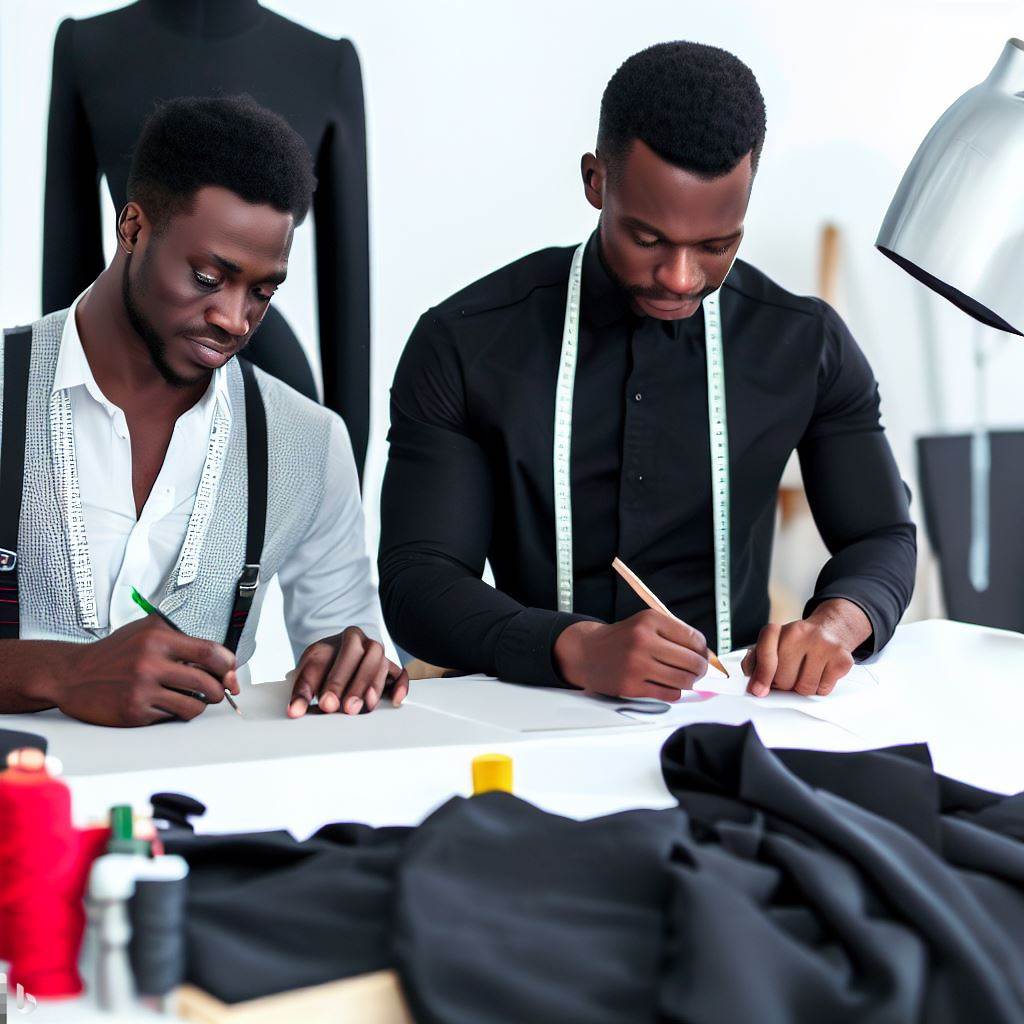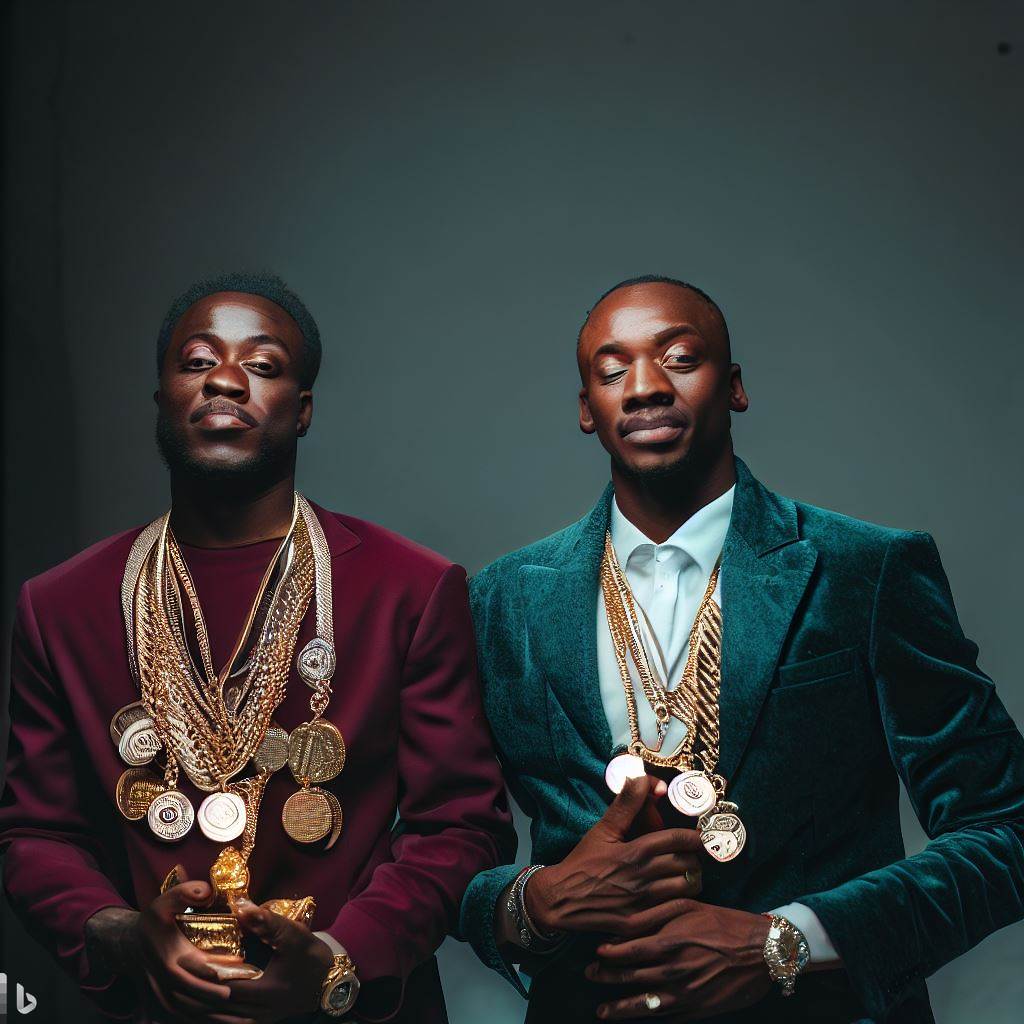Introduction
In this dynamic arena, having the right tools isn’t just helpful; it’s essential. With diverse cultures and styles, Nigerian costume designers weave together a tapestry of artistry.
Costume designing in Nigeria is a vibrant realm of creativity that fuses tradition and modernity.
A. Importance of the Right Tools
Having the right tools at their fingertips empowers Nigerian costume designers to bring their visions to life.
Quality tools streamline the design process, ensuring precision and efficiency.
B. Tools of the Trade
- Sewing Machines: The heartbeat of any costume designer’s toolkit. Versatile and efficient for both traditional and contemporary designs.
- Fabric Assortment: A spectrum of textures and colors to paint cultural stories onto garments.
- Measuring Tape: The foundation of tailored perfection, ensuring impeccable fits.
- Cutting Tools: Precision is paramount; rotary cutters and sharp scissors are must-haves.
- Embellishments: Beads, sequins, and embroidery threads for intricate detailing that tells tales of heritage.
- Mannequins: A 3D canvas for draping and refining designs.
- Computer-Aided Design Software: Blending tradition with technology, aiding in complex pattern creation.
C. Creativity in Diversity
From the flamboyant Yoruba gele to the elegant Igbo “George” wrappers, Nigerian costumes embrace a world of diversity.
Designers merge traditional patterns with contemporary twists, crafting attires that narrate Nigeria’s rich cultural saga.
In the kaleidoscopic realm of Nigerian costume designing, the right tools aren’t just instruments; they’re enablers of artistic brilliance.
Essential Sewing Machines
A. Importance of having a good quality sewing machine
- A good quality sewing machine is essential for Nigerian costume designers to achieve superior stitching results.
- It ensures durability, reduces sewing time, and allows for more complex design possibilities.
1. Types of sewing machines used by costume designers
- Nigerian costume designers use a range of sewing machines, including mechanical, electronic, and computerized models.
- The choice of machine depends on the specific needs and level of expertise of the designer.
2. Features to consider while choosing a sewing machine
- Costume designers should consider factors such as stitch options, speed control, automatic thread cutter, and buttonhole styles.
- Other considerations include the machine’s durability, ease of use, and compatibility with different fabrics.
B. Recommendations for reliable sewing machine brands and models
- Some reliable sewing machine brands for Nigerian costume designers are Brother, Janome, and Singer.
- The Brother CS6000i offers a wide range of stitches and is suitable for both beginners and experienced designers.
1. Special features and suitability for Nigerian costume designers
- The Janome HD3000 is known for its heavy-duty construction, making it suitable for sewing thick fabrics and leather.
- Singer Quantum Stylist 9960 is popular for its extensive stitch options and advanced threading system, perfect for intricate designs.
C. Maintenance tips to extend the lifespan of sewing machines
- Regular cleaning, oiling, and changing needles are essential for proper maintenance of sewing machines.
- It is important to follow the manufacturer’s instructions and avoid overuse or misuse to prevent unnecessary wear and tear.
Read: Animation Directing: Nigeria vs. The Global Scene
Cutting Tools and Accessories
A. The importance of having high-quality cutting tools
In the world of Nigerian costume designers, cutting tools and accessories play a crucial role in the creation of unique and stunning costumes.
Having high-quality cutting tools is of utmost importance as they enable precise and clean cuts, resulting in professional-looking costumes.
High-quality cutting tools are essential for precise and clean cuts in costume design.
1. Variety of cutting tools used by costume designers
Costume designers use a variety of cutting tools to achieve different effects in their designs.
- Scissors are commonly used for cutting fabric, while rotary cutters are ideal for straight lines.
- A seam ripper is essential for undoing stitches, and pinking shears create decorative edges.
2. How each tool is used in the costume design process
Costume designers utilize a variety of cutting tools to bring their designs to life.
Each cutting tool plays a specific role in enhancing the overall design of the costume.
- Scissors are the most commonly used tool for cutting fabric, allowing designers to create intricate shapes and patterns.
- Rotary cutters, on the other hand, are ideal for straight lines and large fabric pieces. They provide the precision needed for accurate measurements and precise cuts.
- Additionally, seam rippers are essential tools for undoing stitches, allowing designers to make corrections or adjustments to their costumes.
- Pinking shears, with their zigzag blades, are used to create decorative edges and prevent fraying.
Each cutting tool serves a specific purpose and contributes to the overall design and aesthetics of the costumes.
B. The significance of having suitable cutting tables and mats
Having a proper cutting table provides a stable surface for precise cutting and measuring.
Alongside cutting tools, having suitable cutting tables and mats is equally essential for costume designers.
A proper cutting table provides a stable surface for accurate cutting and measuring.
1. The ideal characteristics of cutting tables for costume designers
- An ideal cutting table for costume designers should be large, sturdy, and have a smooth surface.
- It is important to consider the height of the table to ensure comfortable working conditions.
2. Recommendations for high-quality cutting mats and their benefits
- Cutting mats are essential to protect the cutting table and provide a self-healing surface for cutting.
- High-quality cutting mats are durable, have clear measurement markings, and prevent fabric slippage.
- Using suitable cutting tables and mats contributes to the overall efficiency and accuracy of costume design.
- Proper maintenance and sharpening of cutting tools are essential to ensure their longevity and optimal performance.
C. Tips on maintaining and sharpening cutting tools
- Regularly clean cutting tools, removing any fabric debris or adhesive residue.
- Keep blades sharp by using a sharpening stone or professional sharpening service.
- Protect cutting tools by storing them properly in a designated case or storage container.
- Avoid using cutting tools on hard surfaces to prevent blade damage.
- Consider investing in quality blades that are more durable and require less frequent sharpening.
- Maintaining and sharpening cutting tools ensures they remain in optimal condition for consistent performance.
To summarize, cutting tools and accessories are indispensable for Nigerian costume designers.
High-quality cutting tools enable precise cuts, while suitable cutting tables and mats provide a stable and efficient working environment.
Proper maintenance and sharpening of cutting tools ensure they perform at their best.
By utilizing the right tools and taking care of them, costume designers can bring their creative visions to life and produce remarkable costumes.
Read: Interpreter vs. Translator: Key Differences in Nigeria
Measuring and Marking Tools
A. The necessity of accurate measuring and marking tools
- Accurate measuring and marking tools are crucial for ensuring precise and well-fitting costumes.
- Without these tools, costume designers may struggle to achieve the desired fit and shape.
- Quality measurements and markings guarantee that costumes will flatter the wearer and meet the required specifications.
1. Variety of measuring tapes, rulers, and gauges used by costume designers
- Measuring tapes come in different lengths and are essential for capturing accurate body measurements.
- Rulers, both flexible and straight, are useful for measuring small details, hems, and seam allowances.
- Gauges such as the hip curve ruler and the French curve assist in creating smooth lines and accurate curves.
2. Functions and importance in achieving precise measurements
- Measuring tapes are flexible and provide accurate length, width, and circumference measurements.
- Rulers assist in measuring straight lines, ensuring even hems, and maintaining symmetry in design elements.
- Gauges help in achieving precise shaping and curve design, especially in complex costume patterns.
B. Variety of marking tools used in costume designing
- Marking tools such as chalk, disappearing ink pens, and tailor’s chalk are common in costume designing.
- These tools aid in pattern making, marking darts, notches, pleats, and other design features accurately.
- By using marking tools correctly, costume designers ensure precise alignment and create well-finished garments.
1. How marking tools aid in pattern making and alterations
- Chalk: A basic but reliable tool used to transfer pattern markings onto fabric, providing easy visibility.
- Disappearing ink pens: Temporary markings that vanish over time or with the application of heat.
- Tailor’s chalk: Suitable for both light and dark fabrics, providing clear and visible markings that can be easily removed.
2. Recommendations for durable and reliable measuring and marking tools
- Invest in high-quality measuring tapes made of durable materials and with clear markings for longevity.
- Choose rulers made of sturdy materials that do not bend easily and have accurate measurement indicators.
- Buy marking tools from reputable brands, ensuring they are designed for fabric and provide clear, easily removable markings.
By utilizing accurate measuring and marking tools, Nigerian costume designers can achieve success in their craft.
Read: Freelance vs Full-Time: Sound Editing Careers in Nigeria

Equipment for Embellishments and Finishing Touches
A. Importance of Embellishments in Nigerian Costume Designing
Embellishments play a crucial role in Nigerian costume designing, as they enhance the overall appearance and cultural significance of the costumes.
1. Popular Embellishment Techniques Used by Costume Designers
- Beadwork: Intricate beadwork is a traditional technique that adds texture and shimmer to Nigerian costumes.
- Embroidery: Beautiful embroidery designs are often used to tell stories or represent important symbols in Nigerian culture.
- Sequin Work: Costume designers frequently use sequins to add sparkle and glamour to their creations.
- Appliqué: Appliqué technique allows designers to layer fabrics and create intricate designs for a unique look.
B. Essential Equipment for Embellishing Costumes
Costume designers require specific tools to achieve professional embellishments and finishing touches on their creations.
1. Sewing Machines with Embroidery and Decorative Stitching Features
Having a sewing machine that includes embroidery and decorative stitching features is vital for Nigerian costume designers.
2. Importance of Having a Good Quality Iron and Steamers for Finishing Touches
Achieving crisp finishes and well-pressed costumes is crucial, making a good quality iron and steamers essential tools.
C. Recommendations for Reliable Brands and Types of Embellishment Tools
When it comes to embellishment tools, certain brands and types are trusted and recommended by Nigerian costume designers.
1. Brands for Sewing Machines
- Brother
- Singer
- Janome
2. Types of Sewing Machines
- Computerized Sewing Machines: These machines offer a wide range of embroidery and decorative stitch options.
- Embroidery Machines: Specifically designed for intricate embroidery work.
- Quilting Machines: Ideal for quilted embellishments and decorative stitches.
3. Brands for Irons and Steamers
- Rowenta
- Black+Decker
- J-2000 Jiffy Garment Steamer
4. Types of Irons and Steamers
- Steam Iron: Provides powerful steam for effective pressing and finishing touches.
- Garment Steamer: Ideal for delicate fabrics and removing wrinkles from costumes without direct contact.
- Travel Iron: Compact and portable iron for designers on the go.
By investing in reliable brands and choosing the right tools, Nigerian costume designers can achieve exquisite embellishments and flawless finishing touches on their costumes.
Read: The Impact of Nigerian Music Publishers on Artistes
Storing and Organization Solutions
A. Significance of proper storage and organization for costume designers
Proper storage and organization are crucial for costume designers to efficiently handle multiple fabrics and accessories.
1. Challenges faced by designers when handling multiple fabrics and accessories
One of the main challenges costume designers face is dealing with various fabrics and accessories.
With a wide range of materials to work with, it can be difficult to keep everything organized and accessible.
This is where proper storage techniques come into play.
B. Tips and ideas for effective storage solutions
- When it comes to storing fabrics, consider using airtight containers or vacuum-sealed bags to prevent damage and keep them neatly organized.
- Invest in plastic bins or drawers to store trims and other costume-related materials in a clear and visible manner.
- Labeling systems using tags or adhesive labels can help costume designers easily identify and find specific materials when needed.
1. Storage options for fabrics, trims, and other costume-related materials
Storing and organizing materials may seem like a mundane task, but for costume designers, it plays a significant role in their workflow and overall success.
- Proper storage and organization solutions are essential for effectively handling multiple fabrics, trims, and accessories.
- When it comes to storing fabrics, it is important to protect them from dust, moisture, and other potential damage.
- Airtight containers or vacuum-sealed bags are great options for preserving fabrics and keeping them neatly organized.
- These sealed storage solutions not only keep the fabrics safe but also make it easier to see what is stored inside.
- For trims and other costume-related materials, investing in plastic bins or drawers is a practical solution.
- Clear containers allow designers to easily see what is stored inside, making it easier to locate specific items when needed.
- By dedicating specific containers for each type of trim or material, costume designers can maintain a well-organized inventory.
2. Recommendations for storage containers, shelves, and labeling systems
In addition to using proper storage containers, implementing a labeling system is crucial for efficient organization.
Adding tags or adhesive labels to each storage container allows designers to quickly identify and retrieve materials, even without opening them.
This saves time and reduces frustration when looking for specific items.
C. Benefits of a well-organized workspace for increased productivity and creativity
A well-organized workspace is essential for costume designers, facilitating easy material access and reducing stress.
Clear visibility of available options stimulates creativity and encourages experimentation in design.
Efficiency in organization systems enhances collaboration and communication among designers and team members.
Moreover, an organized workspace cultivates a clear mind, enabling designers to focus on creativity.
It also promotes professionalism and confidence in clients and collaborators.
Costume designers encounter challenges in handling various fabrics and accessories, necessitating efficient storage solutions.
Preserving fabrics from dust and moisture requires airtight containers or vacuum-sealed bags.
Clear containers for trims and materials enhance accessibility and visibility.
Labeling each container with tags or adhesive labels streamlines material identification and retrieval.
Benefits of a well-organized workspace include time-saving material access, heightened creativity, clear-mindedness, and efficient communication.
Additionally, it projects professionalism and fosters confidence.
Investing in proper storage and organization practices is a valuable endeavor for Nigerian costume designers.
By implementing these strategies, designers can enhance productivity, creativity, and their professional image.
Read: Royalties in Nigeria: A Music Publisher’s Perspective
Conclusion
A. Recap the essential tools discussed in the blog post
Throughout this blog post, we have highlighted several essential tools that Nigerian costume designers should have.
These include measuring tape, sewing machine, serger, fabric shears, and iron.
B. Summary of the importance of having the right equipment for Nigerian costume designers
Having the right equipment is crucial for Nigerian costume designers as it ensures efficiency, accuracy, and quality in their work.
The tools mentioned assist in proper measurements, precise cutting, and impeccable finishing, resulting in well-crafted costumes that meet clients’ expectations.
C. Encouraging readers to invest in quality tools and maintain them properly
Investing in high-quality tools is an investment in the success of Nigerian costume designers.
By choosing durable and reliable equipment, they can enjoy long-term benefits and superior craftsmanship.
Additionally, regular maintenance and proper care of these tools will prolong their lifespan and ensure consistent performance.
Lastly, equipping oneself with the essential tools discussed in this blog post is a fundamental step for all Nigerian costume designers.
By using these tools effectively and maintaining them properly, designers can elevate their work and establish a reputable name in the industry.




